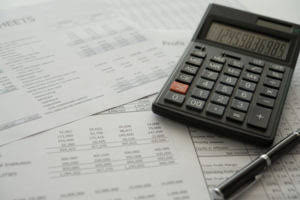
Analyze a company’s financial records as an analyst on a technology team in this free job simulation. Get instant access to video lessons taught by experienced investment bankers. Learn financial statement modeling, DCF, M&A, LBO, Comps and Excel shortcuts. Our popular accounting course is designed for those with no accounting background or those seeking a refresher.
Examples of Accounting Transactions
Let us understand the accounting equation with the help of an example. As a small business owner, you need to understand a few key accounting basics to ensure your company operates smoothly. Below, we’ll cover several accounting terms and principles you should have a firm grasp on.
How to Build Conflict Resolution Skills: Case Studies and Examples
For example, when a company borrows money from a bank, the company’s assets will increase and its liabilities will increase by the same amount. When a company purchases inventory for cash, one asset will increase and one asset will decrease. Because there are two or more accounts affected by every transaction, the accounting system is referred to as the double-entry accounting or bookkeeping system. Examples of assets include cash, accounts receivable, inventory, prepaid insurance, investments, land, buildings, equipment, and goodwill.
![]()
Accounting equation examples

As we’ve learned previously, the accounting equation is a mathematical expression that shows the relationship among the different elements of accounting, i.e. assets, liabilities, and capital (or “equity”). To begin with, it doesn’t provide an analysis of how the business is operating.Furthermore, it doesn’t totally keep accounting mistakes from being made. In any event, when the balance sheet report adjusts itself, there is still a chance of a mistake that doesn’t include the accounting equation. But, that does not mean you have to be an accountant to understand the basics.
Financial Accounting

Part of the basics is looking at how you pay for your assets—financed with debt or paid for with capital. The dollar amount of assets on the left side of the equation must equal the sum of liabilities and equity on the right side of the equation. There are a variety of accounting formulas for businesses that can be used for a variety of purposes, such as producing a statement of cash flows, reviewing inventory turnover, and analyzing total sales. Below are some of the most common accounting equations that businesses should know. Due within the year, current liabilities on a balance sheet include accounts payable, wages or payroll payable and taxes payable. Long-term liabilities are usually owed to lending institutions and include notes payable and possibly unearned revenue.
The ingredients of this equation – Assets, Liabilities, and Owner’s equities are the three major sections of the Balance sheet. By using the above equation, the bookkeepers and accountants ensure that the “balance” always holds i.e., both sides of the equation are always equal. It derives its status which of the following is the basic accounting equation? only from the accrual system of accounting and thereby, it does not apply in a cash-based, single-entry accounting system. Because you make purchases with debt or capital, both sides of the equation must equal. Nabil invests $10,000 cash in Apple in exchange for $10,000 of common stock.
- It can be defined as the total number of dollars that a company would have left if it liquidated all of its assets and paid off all of its liabilities.
- Now that you are familiar with some basic concepts of the accounting equation and balance sheet let’s explore some practice examples you can try for yourself.
- In other words, the total amount of all assets will always equal the sum of liabilities and shareholders’ equity.
- When a company purchases inventory for cash, one asset will increase and one asset will decrease.
- Your bank account, company vehicles, office equipment, and owned property are all examples of assets.
- Therefore, dividends are excluded when determining net income (revenue – expenses), just like stockholder investments (common and preferred).
What Are the Three Elements in the Accounting Equation Formula?
In this form, it is easier to highlight the relationship between shareholder’s equity and debt (liabilities). As you can see, shareholder’s equity is the remainder after liabilities have been subtracted from assets. This is because creditors – parties that lend money such as banks – have https://www.bookstime.com/ the first claim to a company’s assets. These may include loans, accounts payable, mortgages, deferred revenues, bond issues, warranties, and accrued expenses. Although the balance sheet always balances out, the accounting equation can’t tell investors how well a company is performing.
Accounting Equation – Definition, Formula and Examples
- The balance sheet reports the assets, liabilities, and owner’s (stockholders’) equity at a specific point in time, such as December 31.
- Put another way, it is the amount that would remain if the company liquidated all of its assets and paid off all of its debts.
- Only after debts are settled are shareholders entitled to any of the company’s assets to attempt to recover their investment.
- The accounting equation is important because it can give you a clear picture of your business’s financial situation.
- Double-entry accounting is a system where every transaction affects at least two accounts.
Taking time to learn the accounting equation and to recognise the dual aspect of every transaction will help you to understand the fundamentals of accounting. Whatever happens, the transaction will always result in the accounting equation balancing. As you can see, assets equal the sum of liabilities and owner’s equity. This makes sense when you think about it because liabilities and equity are essentially just sources of funding for companies to purchase assets. We know that every business holds some properties known as assets.
- Because there are two or more accounts affected by every transaction carried out by a company, the accounting system is referred to as double-entry accounting.
- Keeping track of the revenues and finances of your small or big business is surely a full time job, so you may need to create a financial position to handle these duties within your business.
- Working capital indicates whether a company will have the amount of money needed to pay its bills and other obligations when due.
- After the company formation, Speakers, Inc. needs to buy some equipment for installing speakers, so it purchases $20,000 of installation equipment from a manufacturer for cash.
Capital essentially represents how much the owners have invested into the business along with any accumulated retained profits or losses. The capital would ultimately belong to you as the business owner. When a company purchases goods or services from other companies on credit, a payable is recorded to show that the company promises to pay the other companies for their assets.
What are Specific Names for Equity on the Balance Sheet?
If both ledgers of your balance sheet don’t match, there may be an error. The third part of the accounting equation is shareholder equity. The revenue a company shareholder can claim after debts have been paid is Shareholder Equity. A screenshot of Alphabet Inc Consolidated Balance Sheets from its 10-K annual report filing with the SEC for the year ended December 31, 2021, follows.
Deixe um comentário